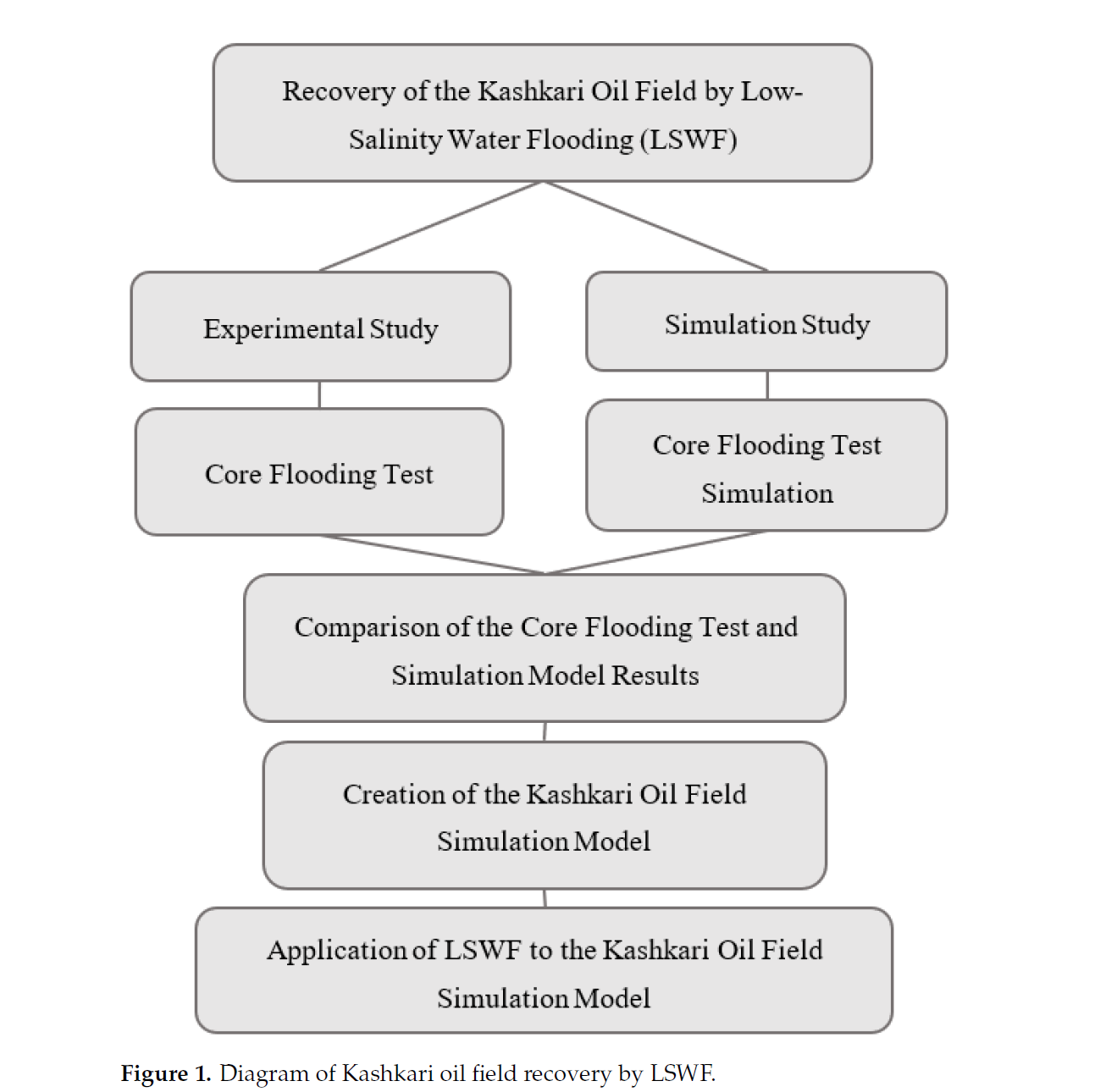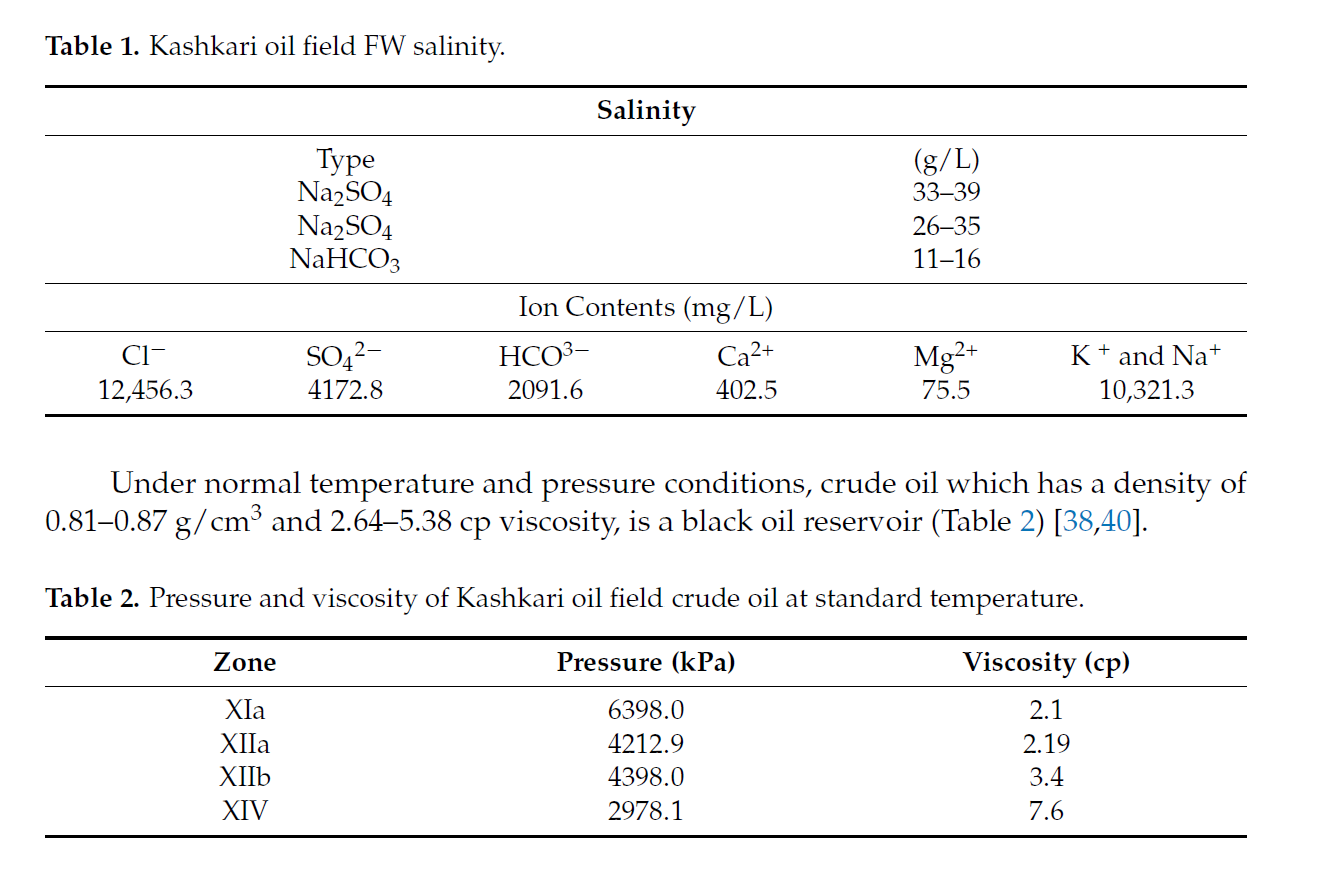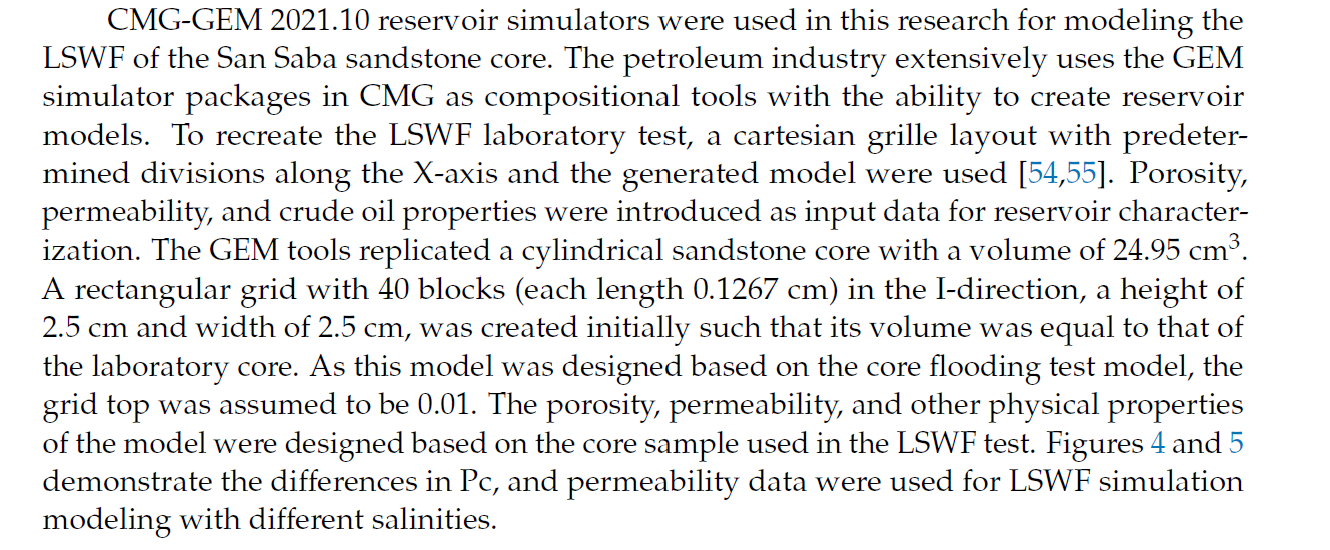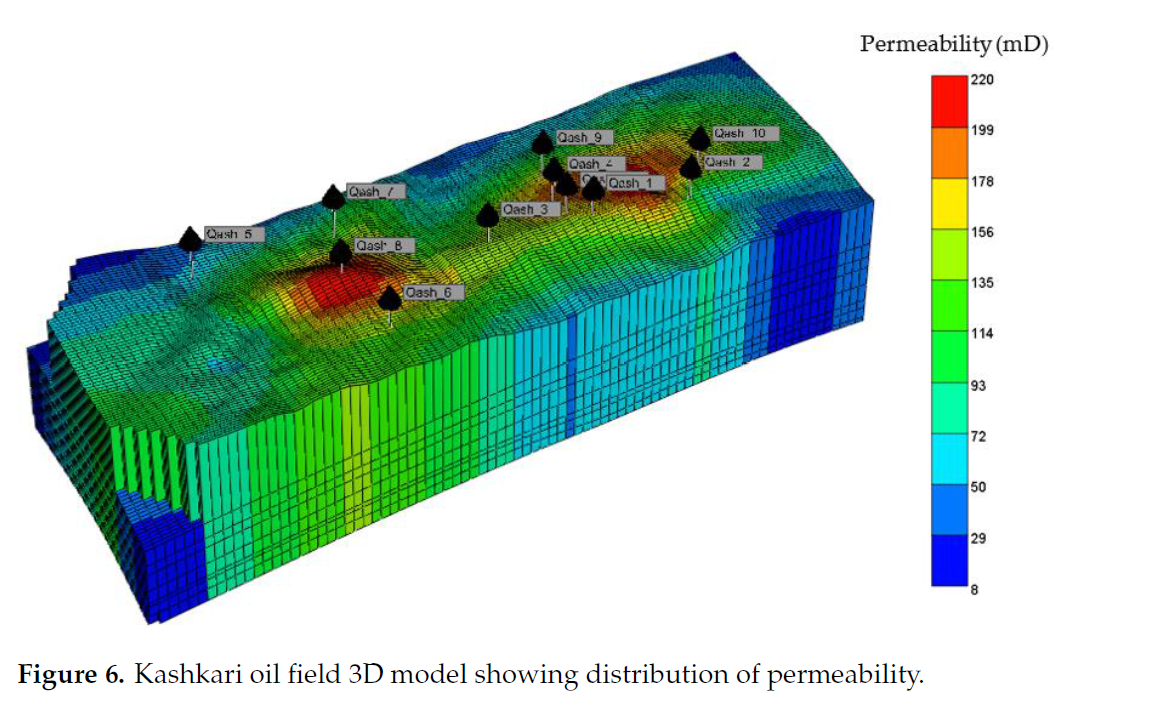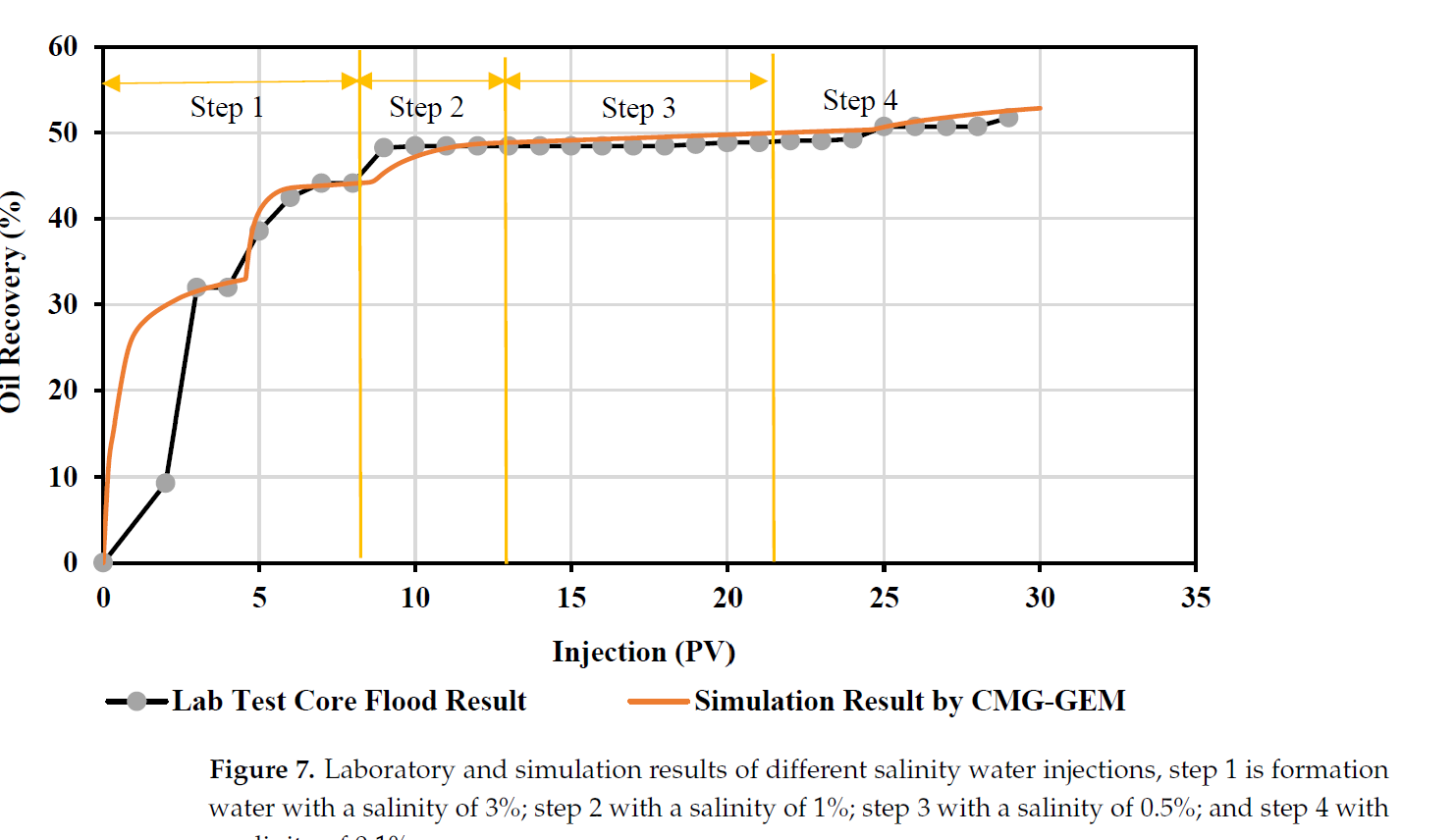Increasing Recoverable Oil in Northern Afghanistan Kashkari Oil Field by Low-Salinity Water Flooding
Abstract
In northern Afghanistan, the Kashkari oil field’s first production well was drilled in 1976, and by 1979, there were a total of ten wells drilled in the area. According to the results of surveys and calculations conducted by research institutions, the total amount of original oil in place (OOIP) in the Kashkari oil site was around 140 million barrels (MMbbls). Therefore, a method to increase the total amount of recoverable oil in the Kashkari oil field by low-salinity water flooding is presented in this study. First, the oil extraction method by low-salinity water injected into the underlying petroleum storage tank was examined by both a laboratory core flooding test and a numerical simulation model. Laboratory conditions (temperature, pressure, rock properties, and oil properties) were designed to mimic those of the Kashkari oil field. Additionally, different injection (Inj) and production patterns were considered to achieve the best results. Next, results obtained from the laboratory and computer simulations were compared. Then, the total amount of recoverable oil was calculated using the low-salinity water flooding method. Based on the findings, details of the simulated model were applied to the Kashkari reservoir model for extracting oil by injecting low-salinity water in the oil field. As a result, an amount of 10.3 MMbbls, which is about 7.5% of the field, was produced.
Keywords:
low-salinity water flooding; immiscible displacement; Kashkari oil field; two-phase flow; numerical reservoir simulation model
